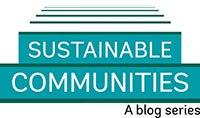Almost five years ago in a discussion with urban experts from several Latin American and African countries, an important question was asked:
how do we curb increasing levels of crime and violence in some of the fastest urbanizing countries in the world?
To explore this query, we embarked on a cross-country analysis of cities in West, Central and East Africa, seeking to not only better our understanding of urban fragility, crime, and violence, but also identify critical entry points to curb the challenges we would find. In the report Urban Fragility and Violence in Africa: A Cross-country Analysis, we explored one of the most recently relevant but less explored dimensions of fragility and violence in Africa: urbanization.
The world is urbanizing at staggering, unprecedented rates. By 2014, 54% of the world’s population was residing in urban areas. This number is projected to grow to 66% by 2050. Today’s large cities are concentrated in developing countries, with medium-sized African and Asian cities as the fastest growing urban agglomerations. People migrate fervently to urban areas with hopes of higher per capita incomes, increased employment levels, improved living conditions and well-being, and better chances to integrate into the national territorial economy.
Unfortunately, this promise has yet to be fulfilled in many cities. Often, the urbanization process is poorly managed and the mismatch between the growing number of migrants and the institutional and infrastructural capacity of cities is large. Experts argue that “the pace of urbanization, together with its sheer scale, is likely to stress national and urban institutions in many developing countries to their breaking point."
What can result are fragile cities with weak institutions and governance. Characterized by inequitable development and access to services, inadequate livelihood opportunities and much more, these “differently” governed spaces are often subsequently plagued by rising levels of crime and violence, which affects acutely the poorest and most marginalized parts of cities. Achieving the World Bank’s twin goals of ending poverty and sharing prosperity in these spaces will be increasingly challenging.
Since the projected trends of urbanization are ever increasing, we are underscoring the critical need to address urban fragility, and within it, crime and violence as part of a broader development strategy. From our experience at the World Bank, we know that there is significant value in multi-sectorial approaches, having reliable data that can inform policy, creating employment opportunities for youth, and building the capacity of national and local institutions, especially regarding security, justice, and job provision. All these are critical elements of curbing fragility and violence, as highlighted by the 2011 World Development Report on Conflict, Security and Development.
Translating these theories into action, the World Bank is bringing a multi-sectorial approach to a rapidly expanding global program on urban violence. A few examples include:
To explore this query, we embarked on a cross-country analysis of cities in West, Central and East Africa, seeking to not only better our understanding of urban fragility, crime, and violence, but also identify critical entry points to curb the challenges we would find. In the report Urban Fragility and Violence in Africa: A Cross-country Analysis, we explored one of the most recently relevant but less explored dimensions of fragility and violence in Africa: urbanization.
The world is urbanizing at staggering, unprecedented rates. By 2014, 54% of the world’s population was residing in urban areas. This number is projected to grow to 66% by 2050. Today’s large cities are concentrated in developing countries, with medium-sized African and Asian cities as the fastest growing urban agglomerations. People migrate fervently to urban areas with hopes of higher per capita incomes, increased employment levels, improved living conditions and well-being, and better chances to integrate into the national territorial economy.
Unfortunately, this promise has yet to be fulfilled in many cities. Often, the urbanization process is poorly managed and the mismatch between the growing number of migrants and the institutional and infrastructural capacity of cities is large. Experts argue that “the pace of urbanization, together with its sheer scale, is likely to stress national and urban institutions in many developing countries to their breaking point."
What can result are fragile cities with weak institutions and governance. Characterized by inequitable development and access to services, inadequate livelihood opportunities and much more, these “differently” governed spaces are often subsequently plagued by rising levels of crime and violence, which affects acutely the poorest and most marginalized parts of cities. Achieving the World Bank’s twin goals of ending poverty and sharing prosperity in these spaces will be increasingly challenging.
Since the projected trends of urbanization are ever increasing, we are underscoring the critical need to address urban fragility, and within it, crime and violence as part of a broader development strategy. From our experience at the World Bank, we know that there is significant value in multi-sectorial approaches, having reliable data that can inform policy, creating employment opportunities for youth, and building the capacity of national and local institutions, especially regarding security, justice, and job provision. All these are critical elements of curbing fragility and violence, as highlighted by the 2011 World Development Report on Conflict, Security and Development.
Translating these theories into action, the World Bank is bringing a multi-sectorial approach to a rapidly expanding global program on urban violence. A few examples include:
- Kenya, where we are working to mainstream violence prevention in the urban portfolio.
- Nigeria, where we supported community-based mapping of urban areas to inform urban upgrading projects and enhance transparency and participation in decision making.
- Mali, where violence prevention is being integrated into the City Development Strategy for Timbuktu.
- Honduras, where the first Bank’s stand-alone project on interpersonal violence prevention is being implemented.
- Jamaica, where community-based initiatives promote public safety through delivery of infrastructure, conflict mediation, and employment opportunities for youth.
- South Sudan, where we conducted victimization surveys in Juba to gather information that complements health and security registries.
- Thailand and Philippines, where violence monitoring systems and repositories are being developed to collect data on conflict and violence to meaningfully inform programs and policies.






Join the Conversation